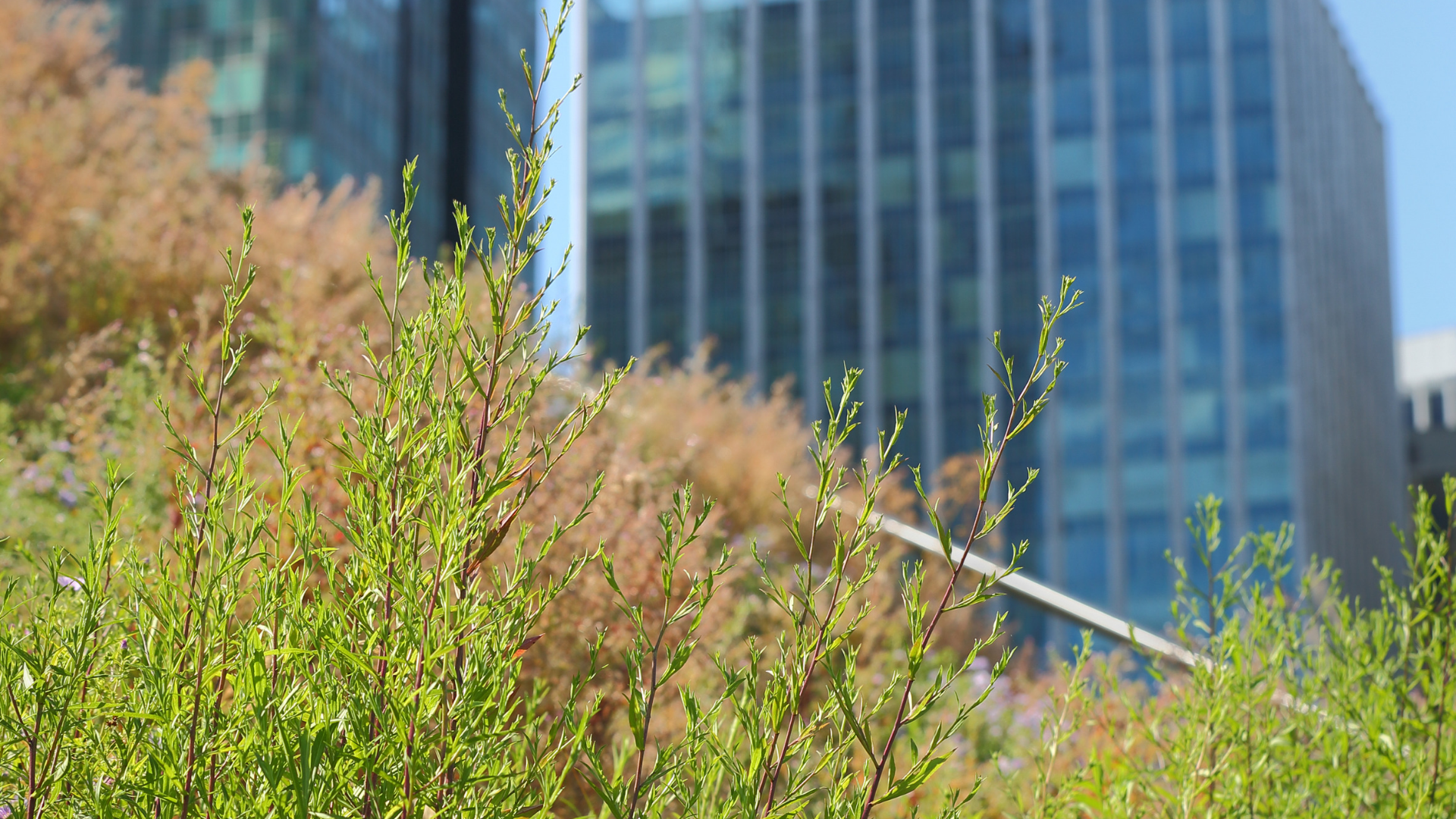
Raise your hand if you’re a “green builder” who sometimes doesn’t feel very green at all. Yeah, you’re not alone.
Download the PDF here to share with family and friends for free!
Every industry has its own challenges.
Mattresses have to be comfortable without being squishy. Restaurants must cater to time-honored tastes with comfort dishes, yet innovate. Dog trainers have to instill fancy tricks but also teach their dogs not to bite toddlers, which just has to be hard.
Because occasionally … let’s not lie … we all want to bite toddlers.
The green building and landscaping industry, however, has it particularly rough. While green builders try to do their part to help the environment, there are some very un-environmental practices baked right into the job. Which means, unfortunately, green builders often have to take shortcuts that work against the very benefits they’re trying to provide. Benefits such as:
- Reduction of resource use
- Cleaner air, water and soil
- Better ecosystems for native plants and animals
- Smaller landfills and healthier oceans
If that depresses you, well, it should. (Can we go back to toddler jokes?) But it doesn’t need to end the conversation, which is what it too often does these days. Instead of throwing your hands in the air and concluding that there’s just “nothing to be done here,” let’s take a deep dive into exactly what’s going wrong – and what that means about potential solutions.
What Is the Green Building and Landscaping Industry Doing Right?
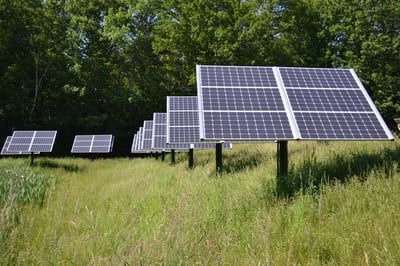 First, a lick of salt before the tequila: Let’s acknowledge that green roofers, builders and landscapers are doing a ton to help the Earth, improve cities like Chicago and make our world a better place. Green infrastructure continues to improve the world for both plants and animals, and it would be a disservice to the industry as a whole to imply otherwise.
First, a lick of salt before the tequila: Let’s acknowledge that green roofers, builders and landscapers are doing a ton to help the Earth, improve cities like Chicago and make our world a better place. Green infrastructure continues to improve the world for both plants and animals, and it would be a disservice to the industry as a whole to imply otherwise.
Like what does it do, you’re wondering? Try the following:
- Managing stormwater by detaining and retaining it on green roofs, in rain gardens, in bioswales and detention ponds, and even on blue roofs
- Purifying air, reducing pollution and mitigating the urban heat island effect
- Lengthening the life of building envelopes all over the city, and therefore reducing the number of virgin resources that go into buildings
- Providing precious habitat for native plants, migratory birds, critical microorganisms and more
- Improving the mental health of humans the world over by bringing more green space into our cities
- Increasing the energy efficiency inside buildings
- Increasing the output of solar panels (that are set on top of green roofs)
That’s just the beginning, of course. The physical, mental, emotional and spiritual benefits of cities that are closer to nature are essentially limitless, and green builders are (permeably) paving the way toward them.
But … hate to say it, guys … we might not be going about it the right way.
Where Are We Going Wrong with Green Landscaping and Building?
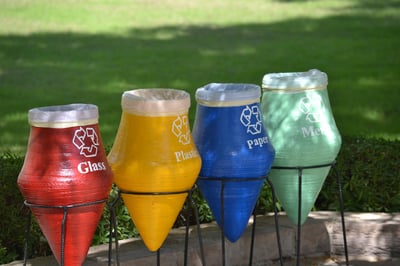
Here’s another fact to face: Just putting a green roof on a building doesn’t make it green.
Same with landscaping a yard with native plants, plugging a retention pond into a landscape or turning a bare patio into a rooftop garden. These are all steps in the right direction – bringing nature into our cities and giving her a spot to rest – but if you’re doing so in not-green fashion, then how green are you being … really?
These are the questions that keep us up at night here at Ecogardens. Because we look around, and we see a lot of waste, pollution and mismanagement happening within the green building and landscaping industry. And we know we’re not the only ones who see it.
Just a few of the things going wrong these days? How about:
- No good avenue for recycling plastic pots: Capping a skyscraper with a green roof is awesome, but those plant starts have to come somewhere, and they often come from plastic trays or pots. Those pots, unfortunately, can’t go into municipal recycling, and nowhere else in town is offering to take them. Companies are forced to choose between spending untold hours and dollars cleaning them up for special recycling or reuse – potentially compromising their bottom line – or tossing them.
- Nowhere to compost: There are extremely limited avenues of composting in a city. In the boonies, you’ve got plenty of room to throw up compost piles and let them do their thing. In the city? Not so much. Again, the choice becomes between massive trucking efforts to get organic matter outside the city, or throwing it in the municipal waste stream.
- A continued use of harsh chemicals: Killing weeds and pests is a prime concern for green roofers and landscapers. Sure, people believe in “going green,” but not at the expense of a pretty-looking yard. The cost of removing weeds by hand is usually prohibitive, and while there are still organic methods (which we use here at Ecogardens), the industry as a whole has little interest in seeing Ol’ Reliable Roundup go away. So for now, it stays.
- A misunderstanding of what “green” should be: Many people struggle with their landscapes because they want Everything Just So. The pond should be free of algae, the grass lush. Yet homeowners and even landscapers fail to take into account that the same chemicals that keep lawns green make algae grow in ponds! Then we need to use chemicals to clean out those ponds. If we could change the idea of green and beautiful, replacing lawns with more resilient and less needy grass, we could prevent the cycle of chemicals in both environments.
- We’re putting up buildings we might not need to: One of the least well-examined aspects of the green building industry is the fact that we are building green buildings that we … don’t … need. To be more specific, we’re building new green buildings, which is great. But if that building goes up on the site of a former, still useful building that was torn down instead of retrofitted, well, that’s just not very green.
- Cities have less space for stormwater management: There are no rolling green hills sitting around in cities, waiting to be turned into bioswales and retention ponds. Reduced stormwater options means more combined sewer overflows, less effective detention and retention, more filthy water running through our streets and into waterways. That doesn’t mean we can’t facilitate stormwater management in cities; it just means we’re not doing a great job of it right now.
The bottom line is that trying to “be green” inside a city adds a layer of complexity that’s hard to cope with, simply because there exists less room to deal with all of those issues. And then there’s the fact that, to a great extent, a lot of roofers, landscapers and builders are just business-as-usual-ing their way through life, ourselves included.
So, do we have to accept that? Well, no. There are definitely some steps we can take.
But before we get to that, let’s discuss one of the most serious issues in the landscaping industry: the little guy.
A Rock and a Hard Spot: Why Innovators Have Trouble Innovating
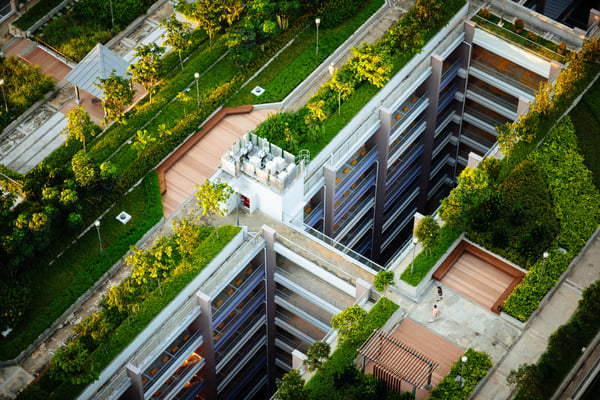 In green building today, we smaller companies face a serious conundrum. The industry is so big, and we’re so small, that to do the right thing and not go bankrupt is a daunting task. Let’s not mince our words:
In green building today, we smaller companies face a serious conundrum. The industry is so big, and we’re so small, that to do the right thing and not go bankrupt is a daunting task. Let’s not mince our words:
It is a huge challenge to be green and make money.
Take the plastic pots, for instance. Smaller companies such as Ecogardens have no viable way to clean them, recycle them, reuse them. We are given the option between driving them vast distances for special recycling (not financially viable), paying big bucks for specialty cleaning (not financially viable), or throwing them away (turrrrrible for the environment).
We want to be very open when we say this: We tossed our pots for years. To do anything else would have created the kind of financial strain that could potentially shut our company down, and if that happened, then how would we help make cities a greener space?
We're delighted to announce that today, however, it's a different story. As part of its dedicated efforts to help the environment, Lowe's now offers an amazing take-back program for plastic pots, and we are thrilled to partner with them on all of our projects. If you still toss your pots, it's time to check out your area Lowe's for a better way.
But still, can you see the problem? This is just one example, and it was so hard to fix ... multiply that by a thousand, and can you see why we sometimes have trouble sleeping at night? No one wants to talk about this, and frankly, we’re right there with the rest of the industry. It’s uncomfortable, and we don’t like admitting that we’re doing something that feels “wrong.” It’s enough to drive a person to chocolate cake.
That’s not to say we’re doing nothing, though. Again, take pots. As we’ve talked about before, biodegradable pots could provide one solution, but it’s certainly not a widespread one as of yet. We’re not going to give up until we make it work, but frankly, that could be a while. There just aren’t that many viable options right now.
We could offer a million more examples just like this one: weedkiller, pesticides, fossil fuels, the industrial horticulture complex, yada yada. But that’s not useful. It’s more useful to acknowledge that while little guys feel enormous pressure to keep their businesses alive and afloat, most change comes from the grassroots level.
And that gives us the responsibility to act.
Like, now.
From Each According to Their Ability: What We CAN Do
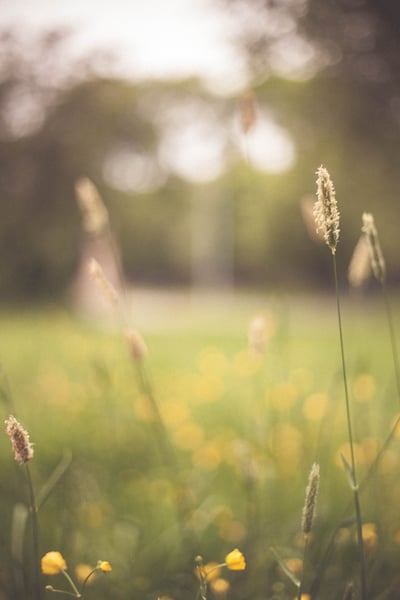
If you haven’t yet broken down in tears and called your shrink, good on you. We can tell you care about this as much as we do, so it should make you happy to know that there are answers.
It starts with changing our perception of green. The goal is to minimize the existing problems rather than maximize their solutions. For instance, we can:
- Plant long-lived natives that thrive in our climate instead of perennials that die and must be replaced season by season, plastic pot by plastic pot
- Reduce the landscaping emphasis on high-maintenance elements such as lawns, ponds and annual flowers
- Transition from intensive groundcovers such as traditional grass to low-requirement ones such as sedums, herbs, mosses or native grasses
- Stop pretending that “out of sight, out of mind” is a good way to do business, and start recognizing that we all have a part to play in changing the industry
- Recognize that the watershed and its wildlife are suffering here and now, and take small steps to reduce the use of chemical inputs
- Put up with the “ugly” transitional period of green roofs and gardens grown from starts and cuttings rather than resource-intensive sod or mats
Instead of rallying around the cause of keeping Roundup alive and kicking, why don’t we put our time and energy toward changing minds, one at a time, small step by small step? Why don’t we do something that makes better sense for our kids and our kids’ kids?
It’s time to make our businesses less about the dollar and more about the right thing to do. And that means taking this message beyond the narrow circle of people in the green building and landscaping industry, and out to consumers who don’t know any better.
Because we do, and that makes it our responsibility to do something about it.
Want to learn more about what we’re doing here at Ecogardens? Get in touch with us today.

